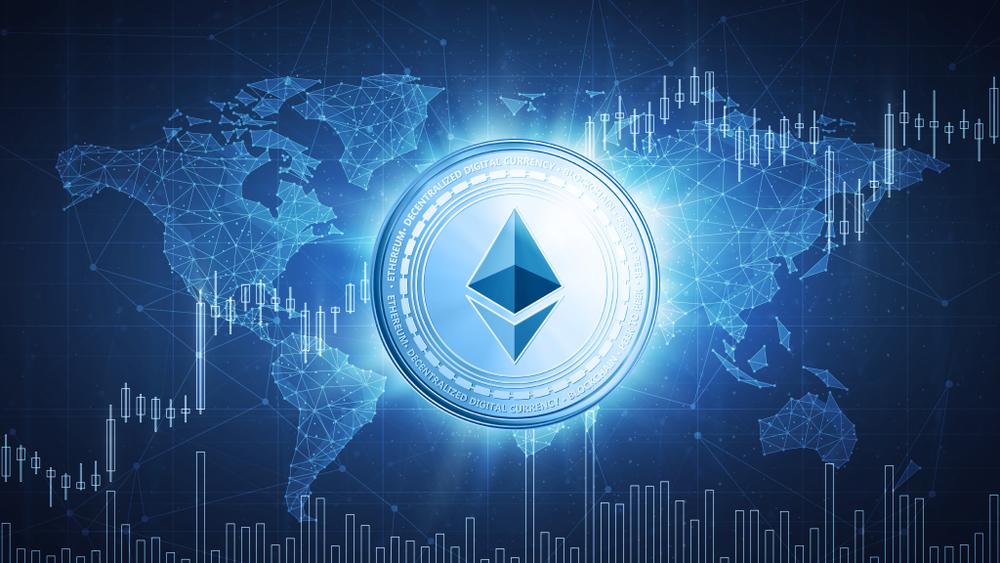- Ethereum creator Vitalik Buterin has revealed that the issuance of ETH after the transition to Ethereum 2.0 is expected to be between 100,000 and 2 million ETH’s per year.
- Buterin also explained the monetary policy behind EIP-1559. The proposal foresees that a small amount of ETH will be burned with each transaction.
The creator of Ethereum, Vitalik Buterin, discussed the monetary policy of Ethereum 2.0 in an interview with the POV Crypto Podcast. Buterin first spoke about the differences between Ethereum and Bitcoin and about their “the competition for the money of the internet”.
Differences between Bitcoin and Ethereum
Buterin said Bitcoin and Ethereum sometimes “try to do different things and sometimes the same things”. However, Buterin said both cryptocurrencies share the same intend of creating a decentralized base layer on which other applications can be built. Bitcoin and Ethereum, according to Buterin, differ in the applications that they concentrate on. While Bitcoin’s predominant idea is to use payment solutions like the Lightning Network to build a store of value and a medium of exchange, Ethereum’s idea is to build applications with intelligent designs.
Furthermore, Buterin talked about the advantages of the Proof of Work (PoW) and referred to 2009 as the “golden age” of this consensus algorithm. Buterin stressed how important it was that the PoW allowed anyone with a computer to participate in Bitcoin mining. Otherwise, he said that this period ended in 2013 with the GPU and ASIC revolution. After the introduction of these, a user had to “have 10 million dollars” to participate in the network.
Buterin said it has been positive for Ethereum to begin with the PoW algorithm because “there was a fairer distribution” in the ETH issuance. Despite this, Buterin believes that the PoW algorithm loses value “with each year” as a mechanism for the emission and distribution of a cryptocurrency. He cataloged the PoW algorithm as a mechanism from which the ecosystem benefited, but which has reached its stage of maturity and has been losing its benefits.
Next, Buterin explained the benefits of the Proof of Stake over the Proof-of-Work. Ethereum is currently in a transition stage to move to the PoS algorithm with Ethereum 2.0. In that sense, the “Topaz” testnet was launched using the configuration that the Ethereum 2.0 mainnet will have. Buterin clarified that PoS is not a distribution mechanism, but a mechanism with greater benefits in terms of emission:
One of the reasons why we’re doing Proof of Stake is because we want to greatly reduce the issuance. And the issuance is going down. So in the specs for ETH 2.0 I think we have put out a calculation that the theoretical maximum issuance would be something like 2 million a year if literally everyone participates.
About the Topaz testnet, Buterin stated that with the current level of participation, the emission is around 100,000 ETH’s per year. Therefore, Buterin expects that when Ethereum 2.0 is launched, between 100,000 to 2 million ETH’s will be issued per year. By comparison, the current issuance of Ethereum is quite higher with about 4.5 million ETH per year.
The impact of burning ETH on the monetary policy
Buterin also briefly explained EIP-1559 and its impact on the monetary policy of Ethereum. The proposal consists of the implementation of a base rate parameter, Buterin explained, which will be charged by the protocol. According to the proposal, with each completed transaction the fees will be divided. One part of the fees will go to the miner who will receive a “tip” and the other part will be the “space fee” which will be burned, as Buterin said:
The reason we do this is because the base rate is automatically adjusted with every 10 million Gas on average, but the block size is not always 10 million Gas (…). So instead of having volatility and transaction rates, we have volatility in the block size. There are profound economic reasons for doing this (…) transaction fee markets are huge market failures that people do not appreciate (…)
It is a market where it is very difficult to adjust your fee optimally and there is a consequence for people who are not willing to pay a large transaction fee and have to wait for their transaction to be included. But in reality, that wait does not benefit anyone. The network does not benefit from that wait.




